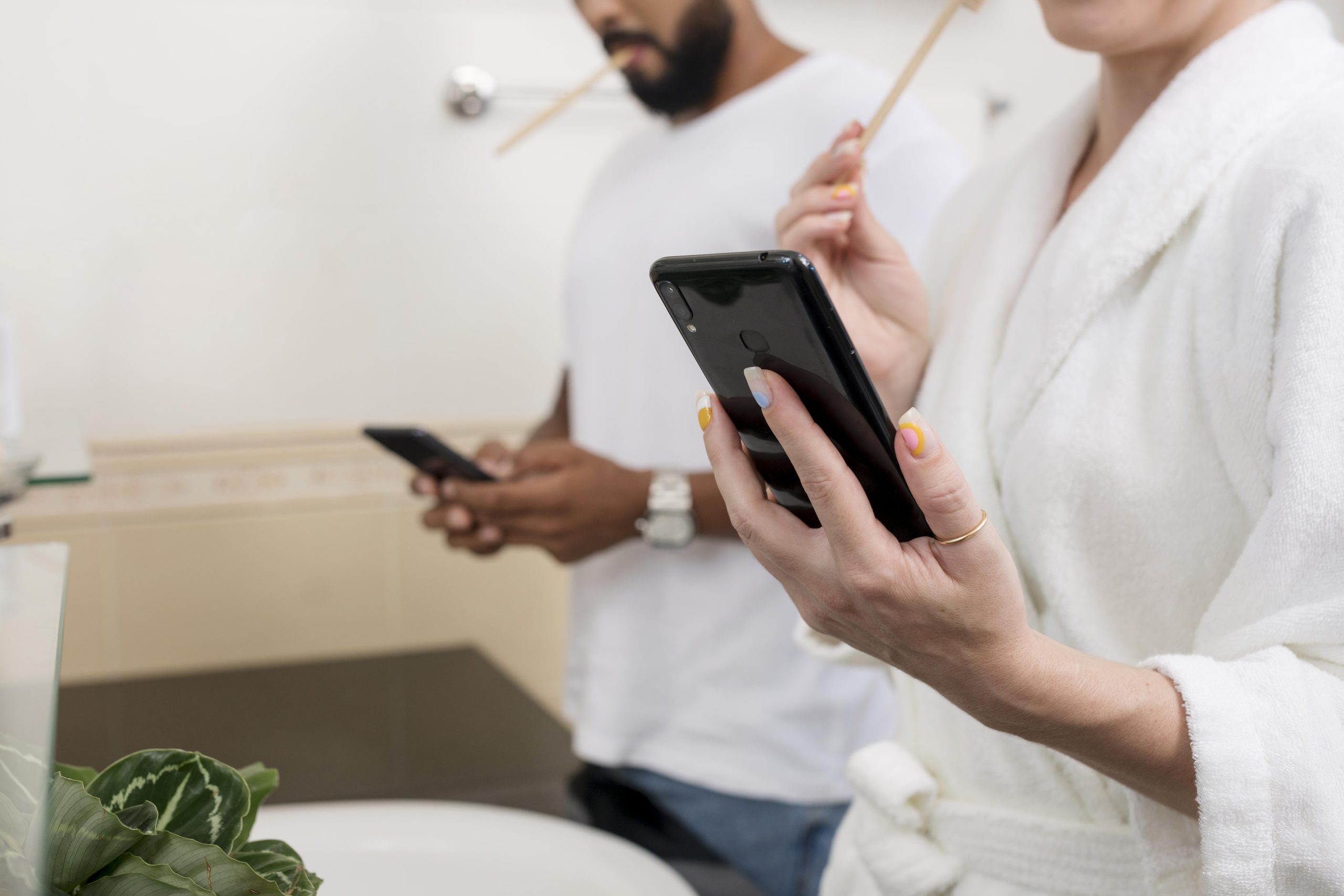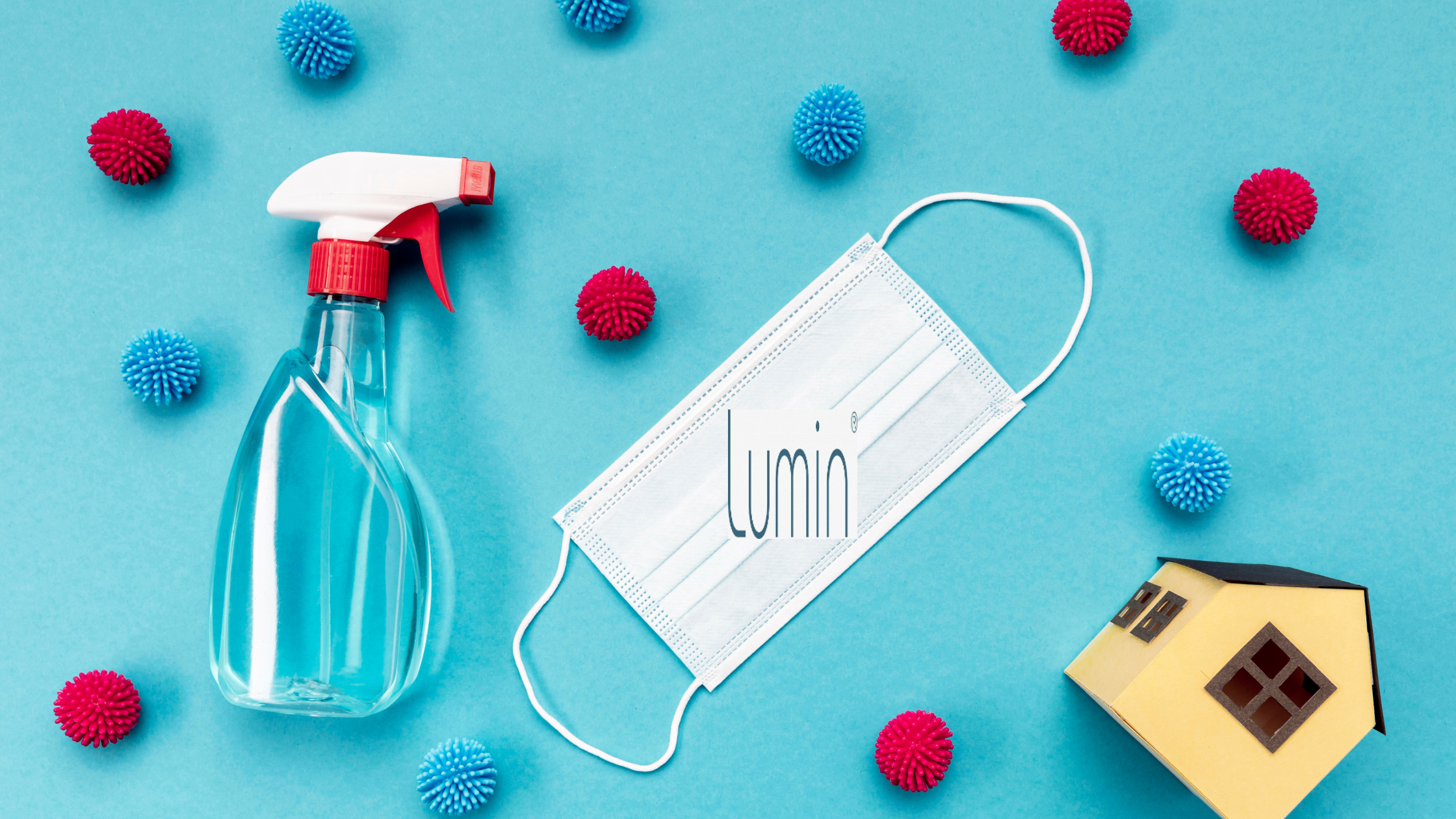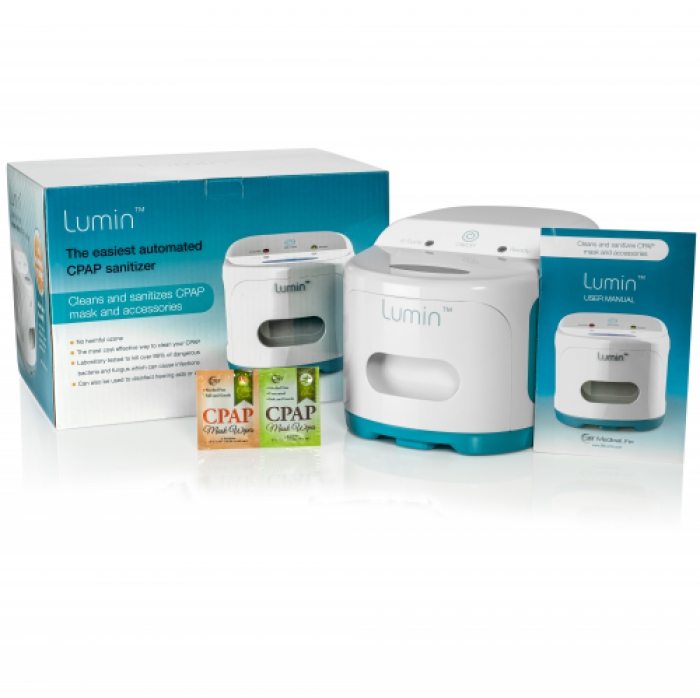We take our phones almost everywhere we go – be it our dinner table, gym, grocery shopping or our bathroom. No matter where we go, our phones are always in our hands, bags, pockets, and sometimes even under our pillows while sleeping. But do you know that your phone is around 7 to 10 times dirtier than a toilet seat?
Are you in shock? Well, it’s true! And, it is because we are in constant touch with our phones – even without washing our hands. While we keep our hands and surroundings clean, we often neglect cleaning our phones from time to time. That’s why germs start building up quicker than you realise.
In this post, we’ll discuss how to clean your phone safely without damaging it. Let’s begin.
Why Phones Get So Dirty
Believe it or not – your phone is a germ magnet! Every time you touch a public surface – a shopping cart, a doorknob, or even cash – and then your smartphone, you transfer a lot of viruses and bacteria onto it. Then we usually hold our phones against our faces, pass them to our family or friends, breathe on them, and repeat.
Even studies have shown that smartphones carry bacteria like Streptococcus, E.coli, and staphylococcus (staph). All these bacteria are likely to make you and your family sick if not cleaned properly. Therefore, it needs regular cleaning to keep germs at bay.
Common Ways People Try to Clean Phones
Here are some common techniques how people generally clean their phones and why some methods fall short.
a. Alcohol Wipes or Disinfectant Spray
Pros: Easily available and kills many germs.
Cons: It may damage your phone’s screen and even cause discolouration or cloudiness. Plus, it may even get into your phone’s charging ports and damage it.
b. DIY Soap or Vinegar Mix
Pros: It is cheap to make at home using natural ingredients.
Cons: Moisture can seep into your phone’s crevices and may lead to internal damage. Vinegar may even corrode the phone’s surface over time.
c. UV-C Phone Sanitiser
Pros: Can kill around 99.9% germs and is safe for phones – as it doesn’t involve chemicals or liquid.
Cons: The initial investment cost may be higher for some people. But it’s worth the cost for the convenience and safety it offers.
Quick Comparison: What Works Best?
Here’s a quick comparison of all three methods to help you decide what’s the best way to clean your phone:
| Method | Kills Germs? | Safe for the Phone? | Mess Free? | Chemical-Free? | Time Needed |
| Alcohol Wipes | ✅ Yes | ❌ No | ❌ No | ❌ No | 1-2 mins |
| DIY Soap/Vinegar | ⚠️ Maybe | ❌ No | ❌ No | ✅ Yes | 5+ mins |
| UV-C Sanitiser | ✅✅ 99.9% | ✅ Yes | ✅ Yes | ✅ Yes | ✅ 5 mins |
Why UV-C Sanitisers Are the Best
UV-C light is a short 254 nm wavelength of ultraviolet light to damage the DNA and RNA of microbes, preventing them from reproducing. This is highly effective at disinfecting hard-surfaces (non-porous) items – including your smartphone.
This same technology is utilised in labs, hospitals, and water treatment facilities. This advanced technology is ideal for disinfecting high-touch items, such as:
- Phones
- Glasses
- Remote controls
- Keys
- Earbuds
- Baby items, like toys and pacifiers
And the best part is that it’s non-invasive and chemical-free. No sprays, no liquids – only light tackles of all the unwanted germs. Wondering how a UV phone cleaner works? Let’s find out!
A Closer Look: Lumin Multipurpose Sanitiser
The Lumin Multipurpose Sanitiser is a reliable advanced multipurpose santiser to kill germs from small everyday use items.
Here’s how it works:
- It leverages powerful UV-C light for killing 99.9% of harmful germs within 5 minutes.
- It is quick, easy-to-use, and safe. You simply need to put your phone or item within its tray, close the lid, and turn on the start button.
Lumin is not just for phones. It can also disinfect other small items, like:
- Hearing aids
- Earbuds/Airpods
- Makeup tools
- Toys
- CPAP masks and tubing
- Baby pacifiers
- Dentures and toothbrushes
With this advanced device, there’s no need to wait for washing and drying anything. Plus, there’s no contact with chemicals or liquids. This makes it convenient to disinfect the phone without damage.
Trusted across Australia and New Zealand, this compact multipurpose santiser is quickly becoming an essential for sanitising office and household items. It’s perfect for office-goes, families, and health-conscious individuals.
7. How Often Should You Clean Your Phone?
According to experts, it’s best to clean your phone at least once a day – particularly in the flu and cold season or if you go out to public places often.
Always clean your phone after:
- Work, gym, school, or grocery shopping
- Using public transport
- Handling cash
- Touching shared surfaces, like handrails, elevator buttons, or ATMs
While wipes or chemicals may remove smudges or harm surfaces of your phone, a UV-C cleaner can disinfect completely without any harm.
Final Thoughts: Clean Smarter, Not Just Harder
So, how dirty is your phone? Well, it’s dirtier than your toilet seat, as it’s full of unseen germs. While there are DIY sprays and wipes to clean surfaces temporarily, they cannot match the level of safety and convenience of a UV-C sanitiser.
If you are looking for a reliable, quick, and chemical-free way to disinfect your phone without any visible harm, a UV phone cleaner, like Lumin, is the top choice. In only 5 minutes, it can help you stay healthy and give you peace of mind.
Bonus: Common Questions
Q: Can I use hand sanitiser or alcohol spray on my phone?
A: It’s not typically recommended to use these methods for cleaning a phone. It is because these may contain chemicals that can damage your phone’s protecting coating or harm its charging ports if liquid seeps in.
Q: Is UV light safe for phones?
A: Yes. The advanced UV-C light doesn’t use moisture or heat, so it makes it safer to disinfect your electronics and delicate surfaces.
Q: Does UV-C really kill germs?
A: Certainly! UV-C light is proven to eradicate up to 99.9% of viruses and bacteria, including those lingering on your smartphones.



